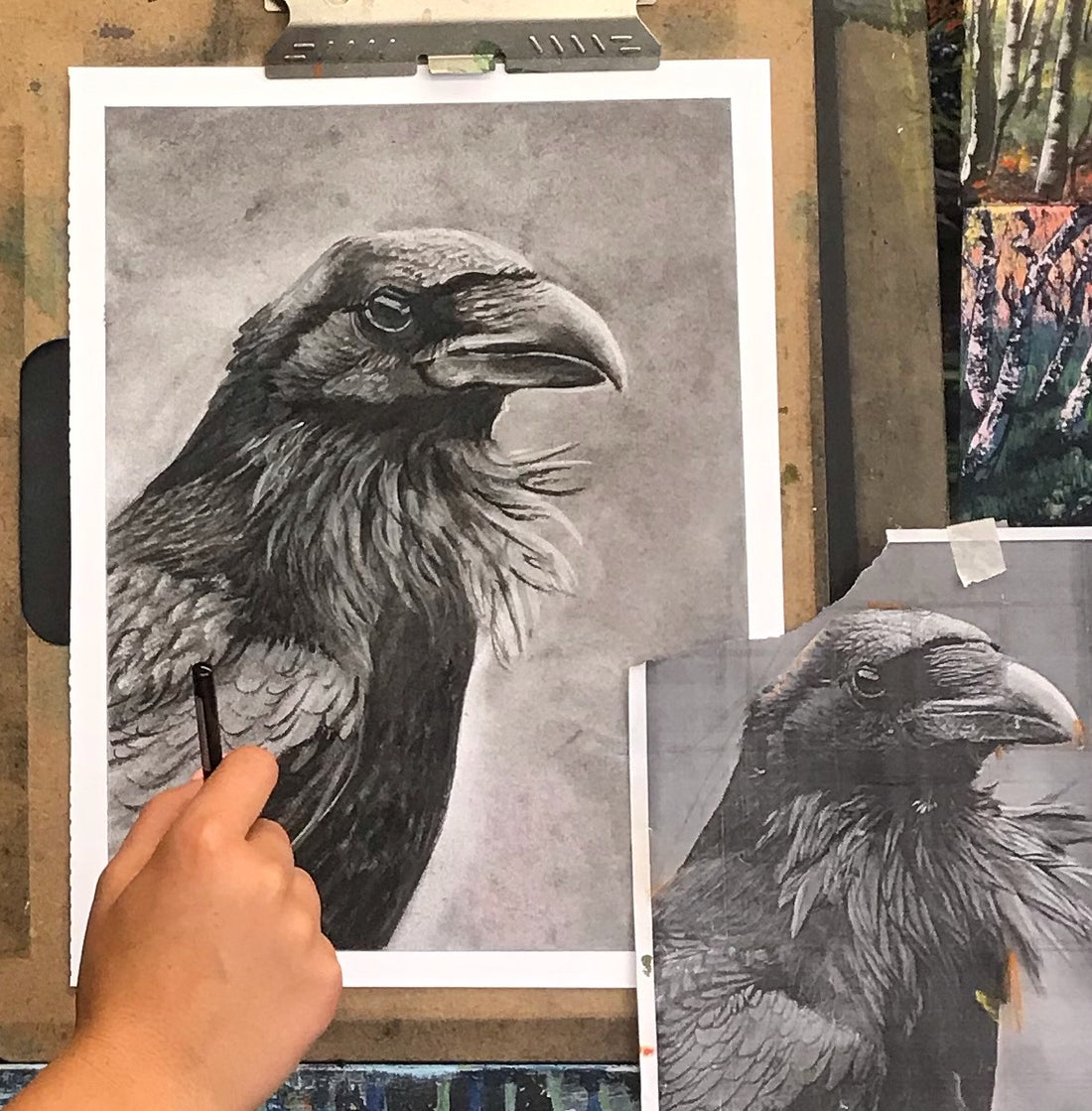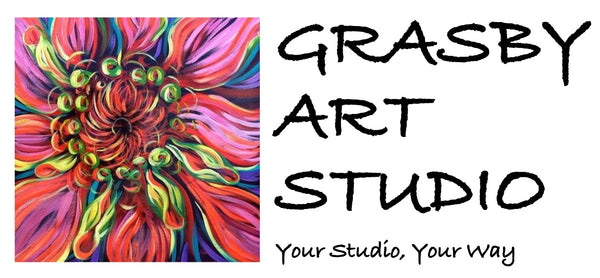
To Draw or to Paint, that is the question?
Share
To DRAW or PAINT... that is the question
Many visitors to the studio ask, "is it better to start with drawing and then move on to painting"? I always find this question perplexing because drawing is always a part of the process. I think what the customer usually means is should I start with dry mediums like graphite and charcoal?, or should I start with wet mediums like acrylic, watercolour, and oil?
From my experience, regardless of the medium you choose, drawing will be a part of the process if FORM is of high importance to the artist. Some projects have more or less form making drawing more important.
The amount of form required in a particular art project depends on the subject and genre and less about the medium (i.e. graphite, charcoal, acrylic, oil, watercolour etc.).
The question really is "which element of art do you want to focus on first?", "do you want to the focus primarily on form?" or "do you want to focus on colour, tone, texture, value?".
FORM in Art
In the art world, the word 'form' pertains to the actual shape of something. Some art projects will be form dominant (have many particular shapes) and in others form will be a minor component. A bicycle, a street, a face or a horse are examples of subjects that have very particular form. The more form a project has, the more careful attention to shapes will be required. Attending to form is a discipline that requires patient attention.
Genre and Form
Art genres can be thought of as on a spectrum from realism (requiring more attention to specific forms) to non-representation (having little attention to specific forms) .
Realism <-------Impressionism-------Abstraction-------->Non-representation
In non-representation the primary elements of art of concern are composition, colour and texture. A photorealist in portraiture, on the other hand, will prioritize correct form as a primary goal, while a landscape impressionist may take more creative license with form and generalize shapes of trees and mountains. While a landscape abstractionist may reduce these forms even further to a collection of lines or shapes.
Experience and form
An experienced artist can render the forms of figures, faces, boats, buildings, bikes etc. accurately (true to form) while referring to a reference. Once an artist has considerable experience working from references, forms can be conjured up in the imagination. An experienced figure artist, for example, can forego using a reference and make generalized illustrations of figures in various postures using their memory and acquired knowledge of human form and proportion.
How to improve form?
The best way to improve attention to form is to systematize the drawing process when adding forms into your art project. At Grasby Art we have a 5 step system that we teach to improve the accuracy of forms. The system involves qualitative math methods with no grids or rulers. These steps include: guidemarking in the vertical scale, assessing the height to width ratio, assessing angles, evaluating curves, guidemarking in the position of details, and adding value and texture. We use a triangulation method to check our work and improve accuracy. Learning this method requires repetition and practice. This is major focus of our drawing fundamentals workshop which is offered in the winter, spring, and fall.
